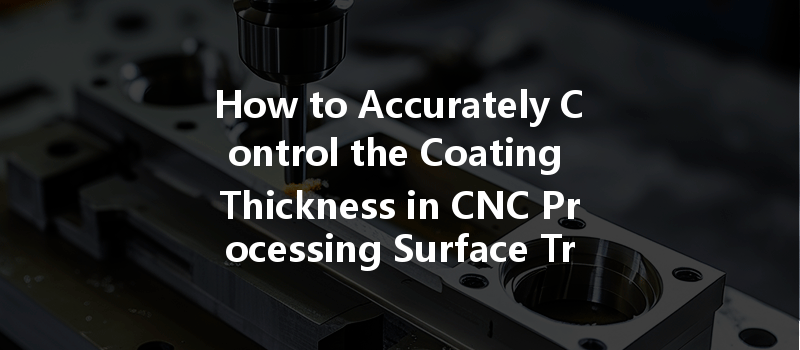Have you ever wondered why some CNC machined parts look pristine while others seem dull and uneven? The secret often lies in how well the coating thickness is controlled during surface treatment processes. In an era where the demand for precision and durability in manufactured parts is at an all-time high, properly controlling coating thickness isn’t just beneficial—it’s essential. In fact, studies reveal that improper coating thickness can reduce the lifespan of a part by over 50%, leading to increased maintenance costs and potential failures. This makes mastering coating thickness a vital skill for anyone involved in CNC machining.
Understanding Coating Thickness in CNC Processing
Coating thickness is the measure of how thick a coating layer is when applied to a substrate. In CNC machining, proper coating can enhance a part’s durability, corrosion resistance, and aesthetics; however, if the coating is too thick or too thin, it can lead to complications such as poor adhesion, uneven surfaces, or compromised functionality.
Why Control Coating Thickness?
Common Types of Surface Treatments in CNC Machining
Before we dive into controlling coating thickness, it’s crucial to understand the types of surface treatments commonly used in CNC machining:
Techniques for Controlling Coating Thickness
Now that we’ve covered what coating thickness is and why it matters, let’s delve into the various techniques you can use to control it effectively:
Choice of Material: Different materials react differently to coatings. Before you decide on a coating process, consider the substrate’s composition and surface properties.
Surface Preparation: The way you prepare the surface can significantly impact the thickness of the coating that adheres. Techniques such as sanding, blasting, or chemical cleaning can ensure that the surface is ideal for coating adhesion.
Application Techniques: The method of coating application is crucial:
Automated Systems: Utilizing automated spray systems can provide a consistent coating thickness by allowing programmable flow rates and patterns.
Sensors and Feedback Loops: Implementing thickness sensors can provide real-time feedback during the coating process, allowing you to make adjustments on the fly.
Equipment Calibration: Regularly calibrating all equipment used in the coating process helps ensure consistent results.

Scheduled Maintenance: Keeping machines maintained will ensure that they operate at optimal efficiency, which is crucial for controlling coating thickness.
Test Panels: Creating test panels to measure coating thickness can prevent issues before they arise. These panels can be checked using micrometers or non-destructive testing methods.
Statistical Process Control (SPC): Implementing SPC techniques can help in monitoring the variation in your coating process. Control charts will give you visual data on any deviations, allowing you to intervene in real-time.
Recommended Practices for Different Coating Techniques
Every surface treatment method has its own set of best practices for controlling coating thickness.
For Anodizing
For Painting
For Powder Coating
For Plating
Challenges in Controlling Coating Thickness
While many best practices exist, challenges can still arise:
Mastering the art of controlling coating thickness in CNC processing is imperative for achieving quality, durability, and aesthetic appeal in manufactured products. By understanding the various surface treatments available, applying best practices, and employing advanced technology and quality control measures, manufacturers can significantly improve their coating processes.
This blog has provided a detailed overview of the complexities surrounding coating thickness in CNC machining. From understanding different surface treatments to implementing modern technologies, every step plays a critical role in yielding consistently excellent results.
In a competitive market where even a small deviation in quality can lead to significant losses, prioritizing controlled coating thickness is essential. It safeguards against performance issues and maximizes the lifespan of parts, ensuring satisfied customers and reducing long-term costs.
As you consider your machining processes, remember that every detail counts. Mastering coating thickness control not only enhances product quality but also positively impacts your business’s bottom line.






